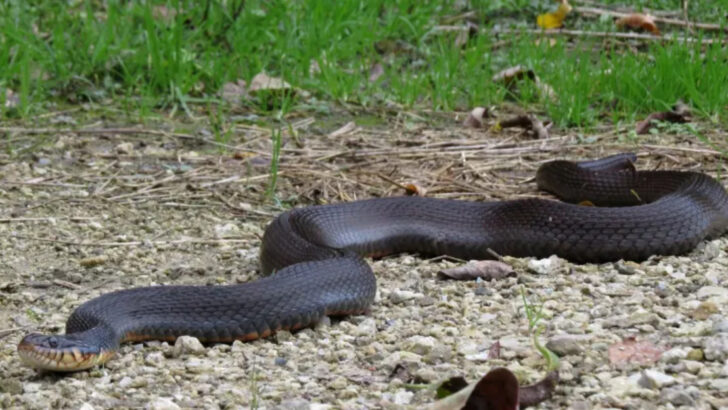Snakes are closer than you think—maybe even under your porch. While you mow the lawn or take out the trash, silent slitherers are doing their thing just a few feet away. Most mean no harm. Some help your yard more than you’d expect. A few might startle you just by showing up uninvited. From garden snakes curled in flower beds to bold rat snakes climbing fences, suburban America is crawling with reptiles you probably didn’t know were regular guests. Here are 16 snakes you’re most likely to spot in your neighborhood—and what to do when you see one.
Garter Snake
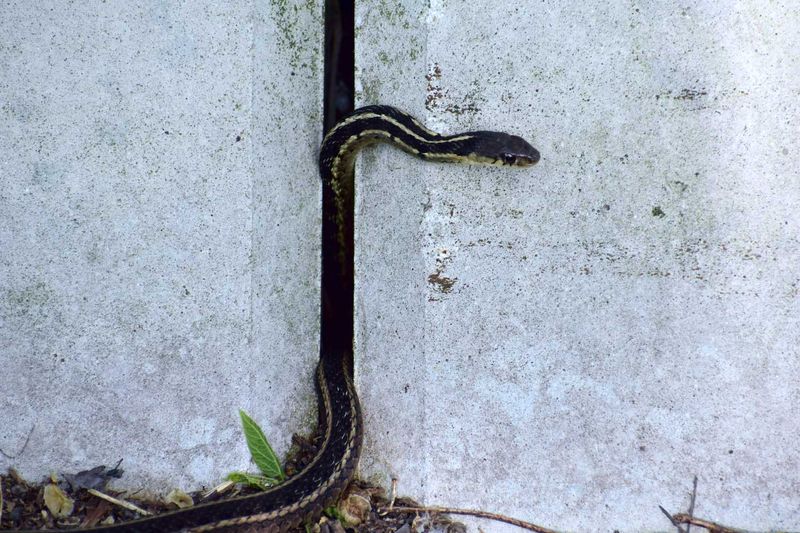
Often found in suburban backyards, the garter snake is a familiar sight to many residents. With its slender body and distinctive stripes running along its length, this snake is often seen basking on sunny days. Known for its adaptability, the garter snake thrives in various environments, from gardens to fields.
Despite their commonness, they are non-venomous and pose little threat to humans. Their diet mainly consists of small amphibians and insects, making them helpful in controlling pest populations. An encounter with a garter snake can be a delightful surprise for garden enthusiasts.
Did you know? Garter snakes can emit a foul smell when threatened, a trait that helps deter predators. This fascinating snake plays a vital role in the suburban ecosystem.
Black Rat Snake
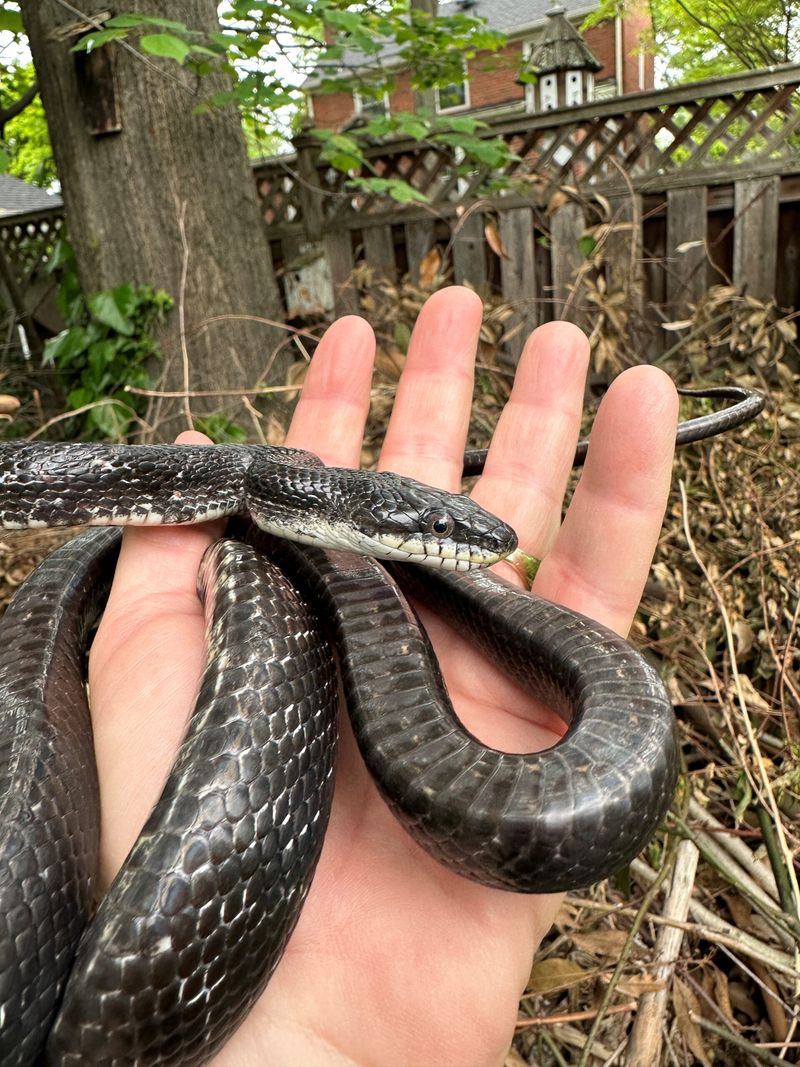
The black rat snake, with its glossy black scales, is a stealthy inhabitant of suburban areas. Often seen climbing trees or slithering through gardens, these snakes are known for their impressive size and gentle demeanor.
Despite their intimidating appearance, black rat snakes are non-venomous and beneficial to have around. They primarily feed on rodents, helping to keep the local pest population in check.
These snakes are excellent climbers, and it’s not uncommon to spot one basking in the sun on a branch. Their presence is a testament to the rich biodiversity that can exist in suburban areas.
Copperhead
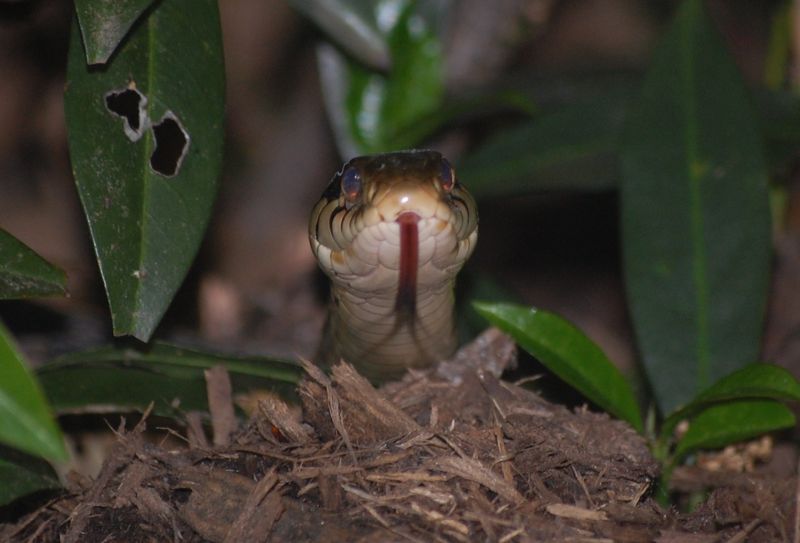
Copperheads are a striking presence in suburban parks and wooded areas. With their distinctive copper-colored heads and hourglass pattern, they blend seamlessly with fallen leaves.
Although venomous, copperheads are generally non-aggressive and will avoid confrontation if left undisturbed. These snakes play a crucial role in controlling the population of small rodents and insects.
Their unique camouflage makes them masters of stealth, often going unnoticed in their natural habitat. Observing a copperhead in the wild can be an awe-inspiring experience, highlighting the beauty and danger coexisting in nature.
Eastern King Snake
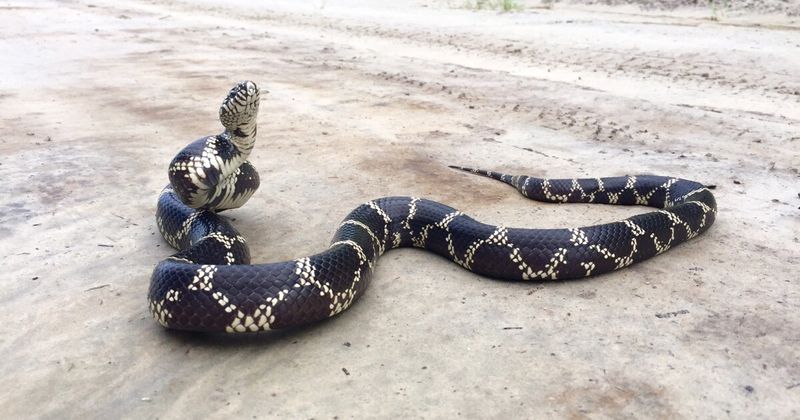
Known as the “king” of snakes, the Eastern King Snake is a regal resident of suburban landscapes. With its glossy black body adorned with vibrant white or yellow bands, it’s a captivating sight on nature trails.
Eastern King Snakes are immune to the venom of other snakes, even consuming venomous species like copperheads and rattlesnakes. This diet helps maintain balance in the ecosystem.
Their presence is a boon to suburban areas, as they control the population of less desirable snake species. Observing their graceful movement is a reminder of the intricate web of life in suburban nature.
Milk Snake
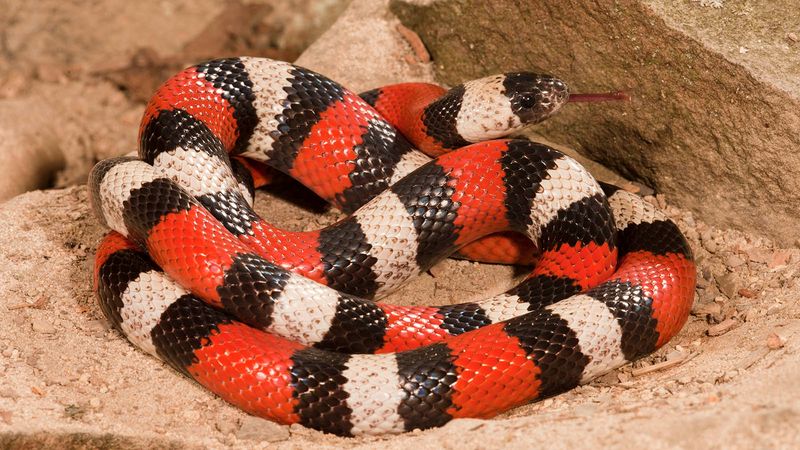
The milk snake, with its vibrant red, black, and white bands, is often mistaken for the venomous coral snake. However, this harmless snake is a beneficial resident of suburban backyards.
Milk snakes are known for their reclusive nature, preferring to stay hidden under logs or in rock crevices. They primarily feed on rodents and small birds, playing an essential role in pest control.
Their striking appearance and gentle nature make them one of the most fascinating snakes to observe. Despite their shy demeanor, milk snakes contribute significantly to the ecological balance in suburban areas.
Ribbon Snake
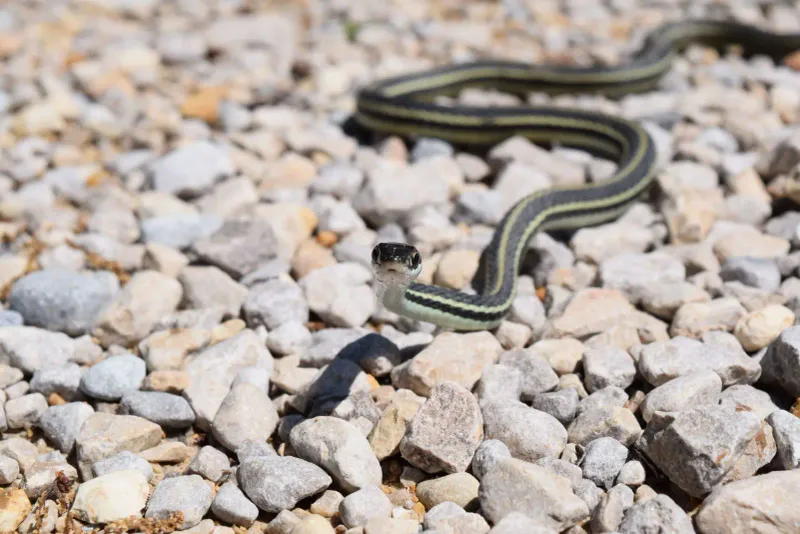
The elegant ribbon snake, with its slender body and vivid stripes, is a frequent visitor to water features in suburban settings. Often seen near ponds or streams, these snakes are agile swimmers.
Ribbon snakes feast mainly on amphibians and small fish, aiding in the control of these populations. Their quick movements and delicate frame make them a captivating sight for those fortunate enough to witness them in action.
Despite their timid nature, ribbon snakes play a vital role in the aquatic ecosystems of suburban environments, illustrating the diversity of life that can flourish there.
Brown Snake
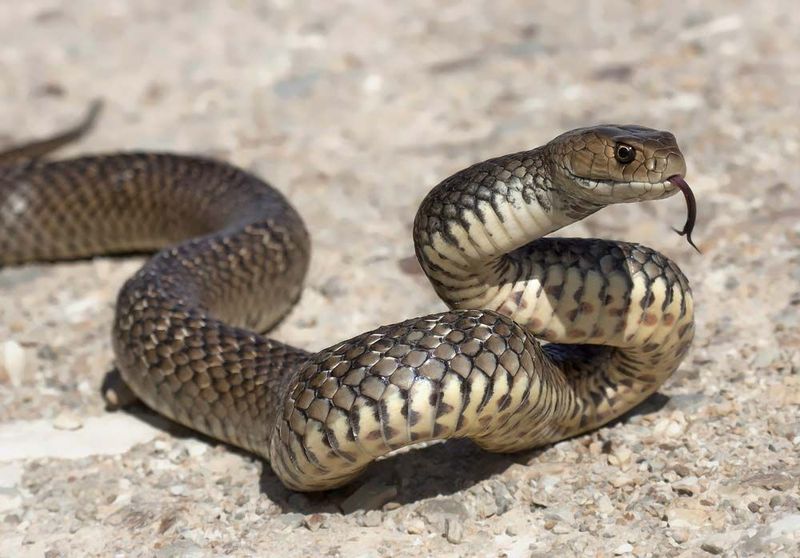
The unassuming brown snake is a small, inconspicuous reptile often found in suburban gardens. Its muted coloration allows it to blend seamlessly into its environment, making it challenging to spot.
Despite its modest appearance, this snake contributes to insect control, feeding on slugs, snails, and other small invertebrates. Brown snakes are non-venomous and pose no threat to humans.
Their elusive nature adds an element of mystery to suburban wildlife, as they quietly go about their role in maintaining the ecological balance. Observing a brown snake can be a rare and rewarding experience for nature enthusiasts.
Rat Snake

The rat snake, known for its adaptability and size, is a fascinating resident of suburban areas. With a varied diet that includes rodents and birds, it plays a vital role in controlling pest populations.
Often seen basking on sunny stone walls or gliding through gardens, rat snakes are non-venomous and generally harmless to humans. Their ability to climb and swim makes them versatile hunters in diverse environments.
Their presence in suburban settings is a sign of a healthy ecosystem, as they help keep the balance between predator and prey. Spotting a rat snake can be a thrilling encounter for wildlife observers.
Hognose Snake
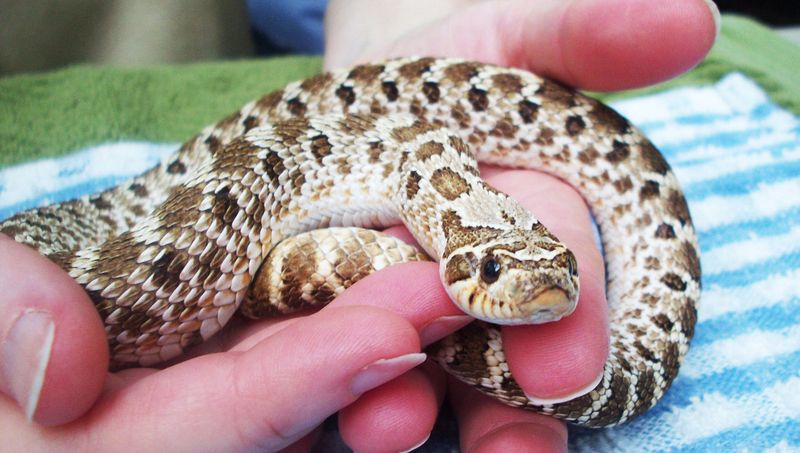
Notorious for its dramatic defensive displays, the hognose snake is a unique inhabitant of suburban parks. When threatened, it flattens its head and hisses, mimicking a more dangerous snake.
Despite its intimidating behavior, the hognose snake is harmless to humans. It feeds primarily on amphibians, making it an important predator in its ecosystem.
Its distinctive upturned snout adds to its quirky charm, making encounters with this snake both entertaining and educational. The hognose snake’s presence is a reminder of the diverse and often surprising wildlife found in suburban areas.
Water Snake
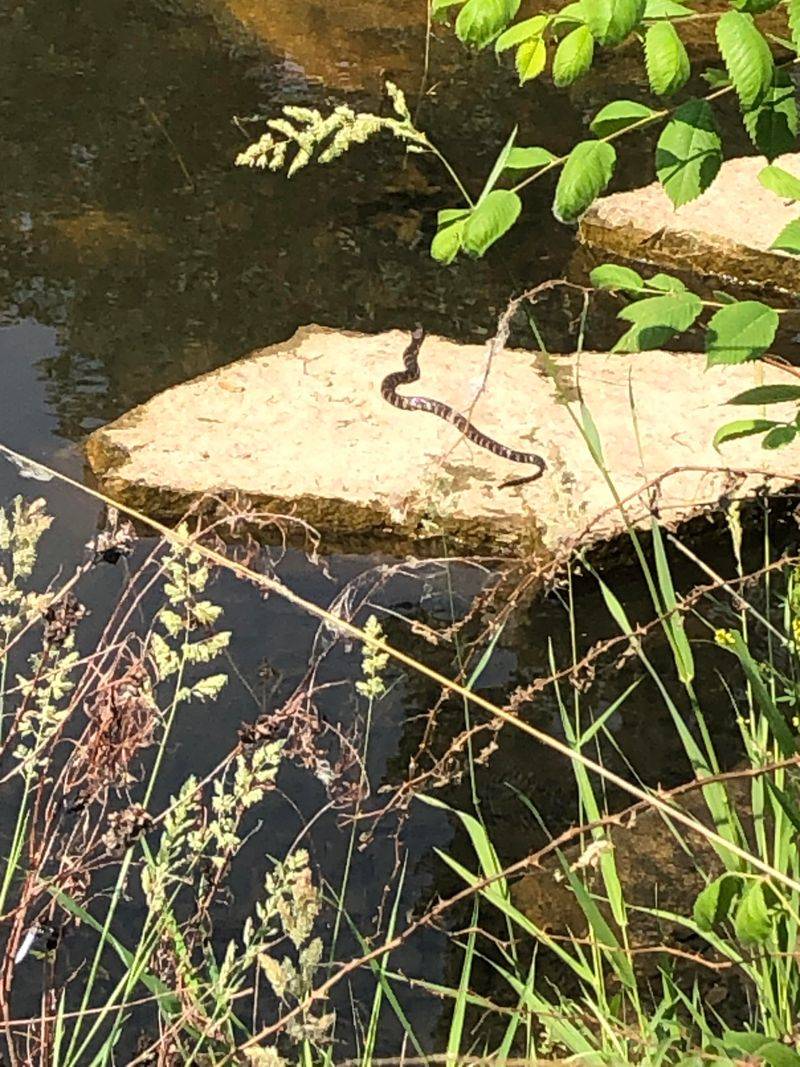
Water snakes are common sights around suburban ponds and streams, where they glide effortlessly through the water. Their mottled brown and grey patterns provide excellent camouflage among aquatic plants.
These snakes play a crucial role in the aquatic food chain, feeding on fish and amphibians. Though they can appear aggressive when threatened, they are non-venomous and pose minimal risk to humans.
Observing a water snake in its natural habitat can be a serene experience, highlighting the intricate web of life that thrives in suburban water bodies. Their presence signifies a vibrant and balanced ecosystem.
Copperbelly Water Snake
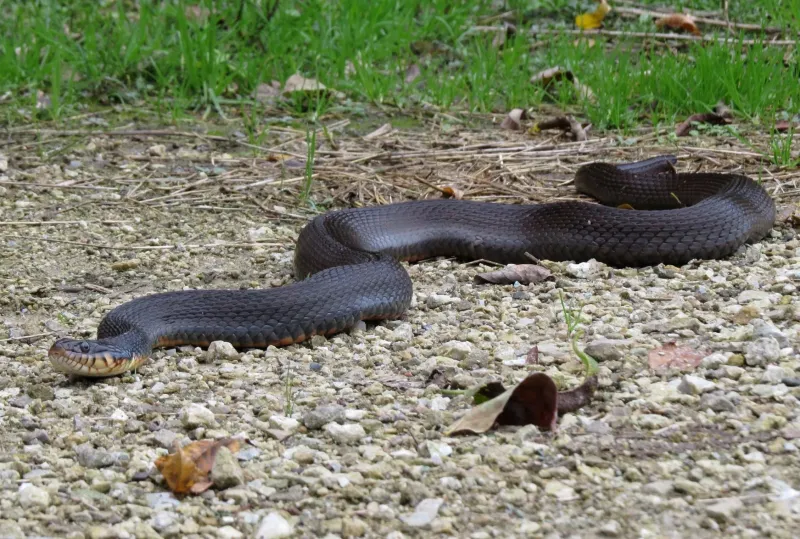
The copperbelly water snake, with its striking belly color, is a rare but fascinating resident of suburban wetlands. Its vibrant underside contrasts sharply with its dark upper body, making it a distinctive sight.
These snakes are excellent swimmers, often seen basking on rocks or among aquatic vegetation. They feed primarily on fish and amphibians, contributing to the control of these populations.
Despite their rarity, copperbelly water snakes remind us of the hidden treasures within our suburban landscapes. Their presence underscores the importance of preserving wetland habitats for future generations to enjoy.
Green Snake
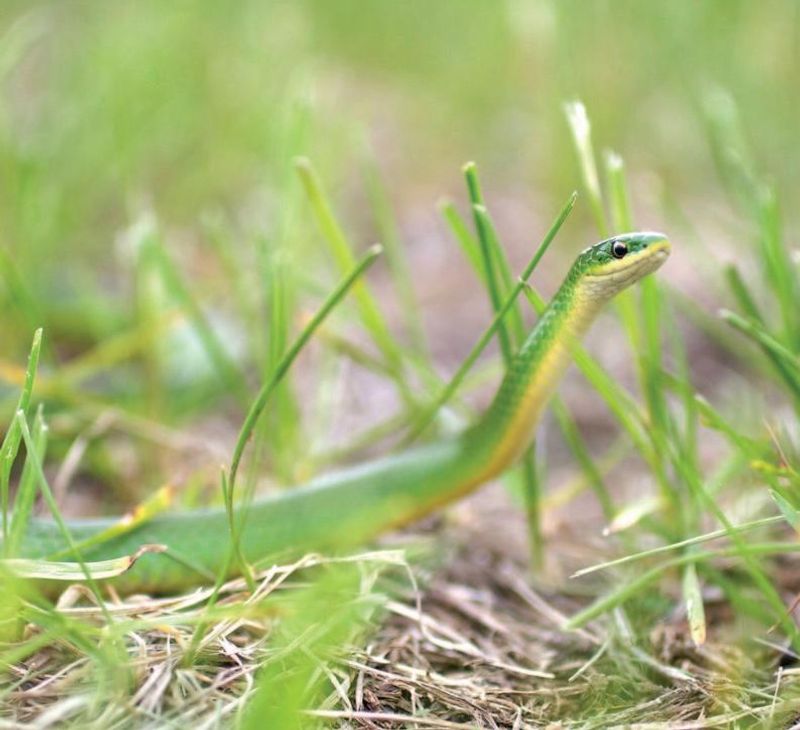
The smooth green snake, with its vibrant emerald hue, is a dazzling creature often seen in lush suburban gardens. Its color provides excellent camouflage among leaves, allowing it to blend seamlessly into its surroundings.
These snakes are gentle and non-venomous, making them a welcome presence in any garden. They primarily feed on insects, playing a crucial role in pest control.
Their serene demeanor and striking appearance make them a favorite among reptile enthusiasts. Observing a green snake in its natural habitat is a testament to the beauty and diversity of suburban wildlife.
Corn Snake
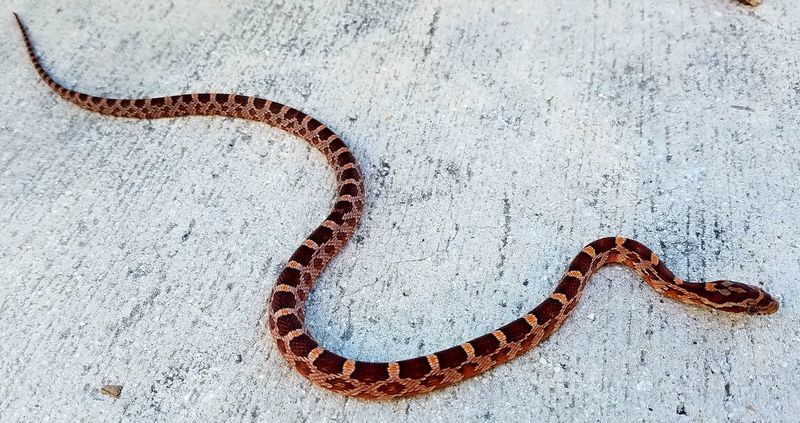
Corn snakes, with their distinctive orange and brown patterns, are common in the outskirts of suburban areas. Known for their calm nature, these snakes are often kept as pets due to their manageable size and docile temperament.
In the wild, corn snakes help control rodent populations, making them beneficial residents of suburban ecosystems. They are non-venomous and pose no threat to humans.
Their vibrant coloration and gentle nature make them a fascinating subject for wildlife enthusiasts. Spotting a corn snake in the wild offers a glimpse into the intricate balance of suburban ecosystems.
Coachwhip Snake
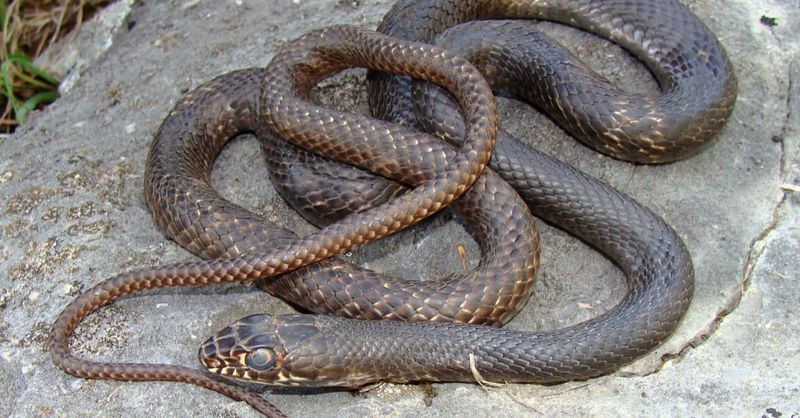
Known for their incredible speed and agility, coachwhip snakes are the sprinters of the suburban snake world. With their long, slender bodies, they can cover ground quickly, making them a rare sight for most observers.
These snakes are non-venomous and primarily feed on smaller reptiles and insects. Their alert and curious nature often leads them to explore open areas, like suburban parks and trails.
The presence of a coachwhip snake signifies a robust and diverse ecosystem, as they require large territories to thrive. Witnessing one in action is a thrilling experience for those lucky enough to spot them.
Ringneck Snake
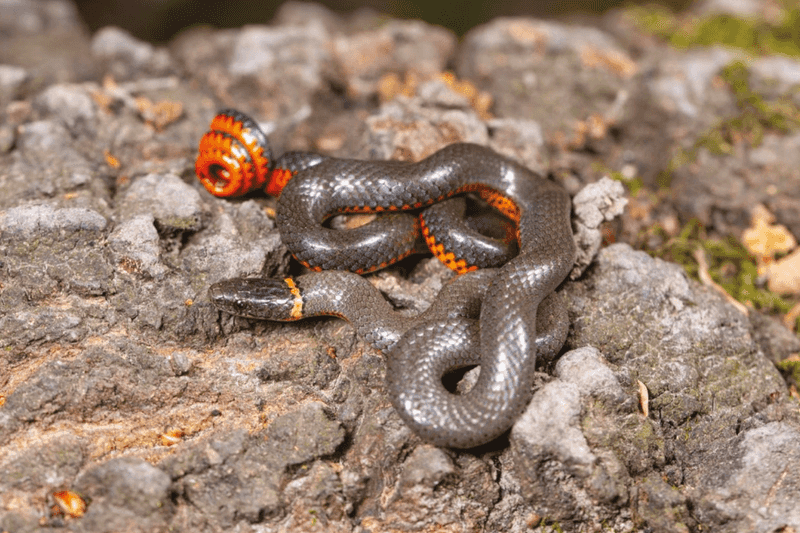
The tiny ringneck snake, with its characteristic yellow or orange ring around its neck, is a charming resident of suburban woodlands. Its small size and secretive nature make it a rare but delightful find.
Ringneck snakes primarily feed on insects and small amphibians, contributing to pest control in their habitats. They are non-venomous and pose no threat to humans.
Their vibrant ring and shy demeanor make them a favorite among herpetologists and nature lovers alike. Spotting a ringneck snake is a reminder of the subtle wildlife intricacies present in suburban environments.

